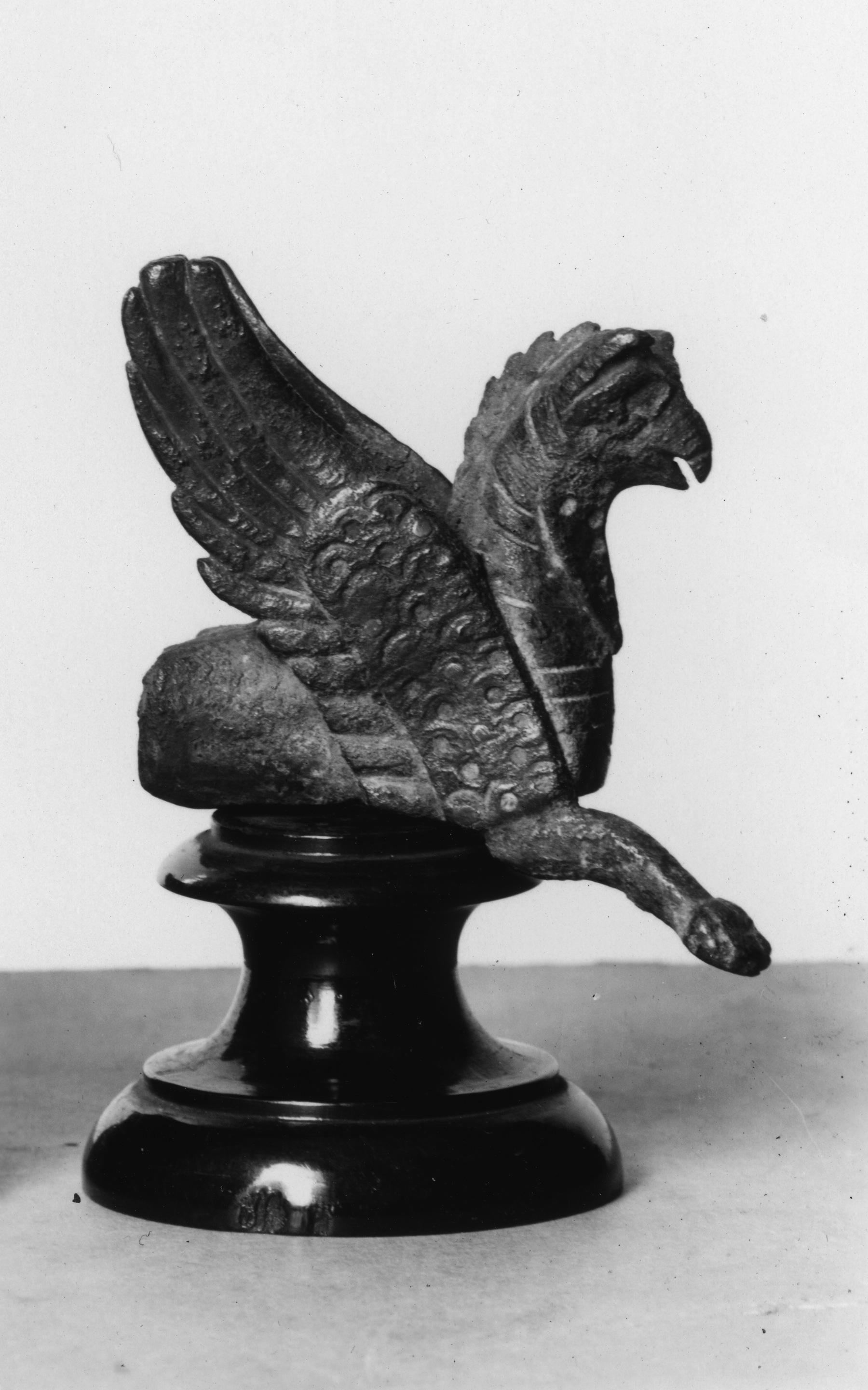Griffin
(Ancient Near East )
Griffins were mythical monsters, derived from Near Eastern art, with a winged animal's body and an eagle's head. They became popular in Greece during the 7th-6th century BCE as symbols of divine power and as protective figures. Persian-style griffins, such as this example with a winged lion's body and horns on its head, appeared in Greece during the 4th century BCE.
Provenance
Provenance (from the French provenir, 'to come from/forth') is the chronology of the ownership, custody, or location of a historical object. Learn more about provenance at the Walters.
Henry Walters, Baltimore [date and mode of acquisition unknown]; Walters Art Museum, 1931, by bequest.
Exhibitions
| 2009 | Things With Wings: Mythological Figures in Ancient Greek Art. Ward Museum, Salisbury. |
| 2005-2006 | Things With Wings: Mythological Figures in Ancient Greek Art. The Walters Art Museum, Baltimore. |
Conservation
| Date | Description | Narrative |
|---|---|---|
| 2/17/1972 | Treatment | cleaned |
| 9/16/1975 | Treatment | cleaned |
Geographies
Iran (Persia) (Place of Origin)
Measurements
H: 3 7/16 × L: 3 × W: 7/8 in. (8.7 × 7.6 × 2.2 cm)
Credit Line
Acquired by Henry Walters
Location in Museum
Not on view
Accession Number
In libraries, galleries, museums, and archives, an accession number is a unique identifier assigned to each object in the collection.
In libraries, galleries, museums, and archives, an accession number is a unique identifier assigned to each object in the collection.
54.926


